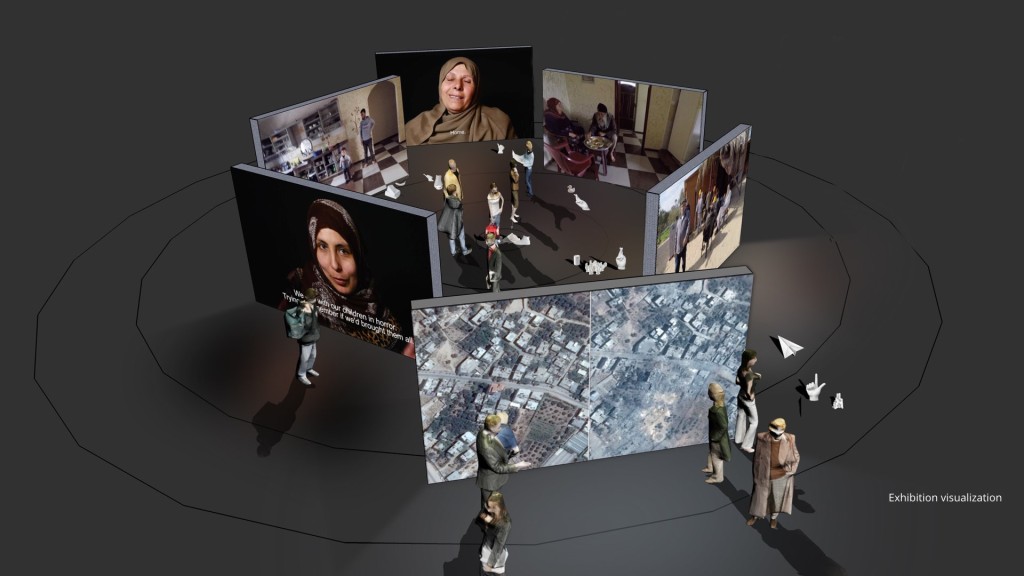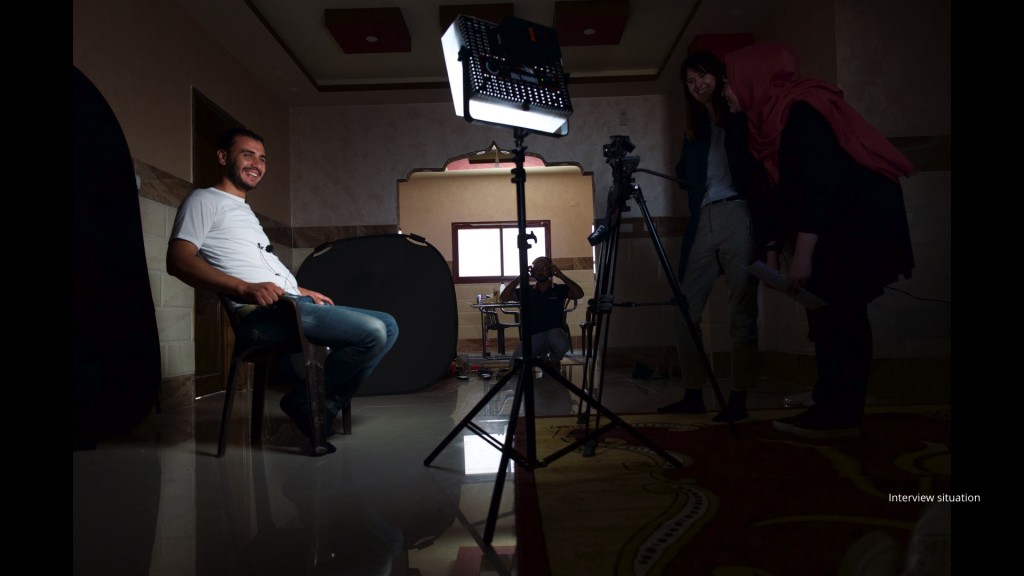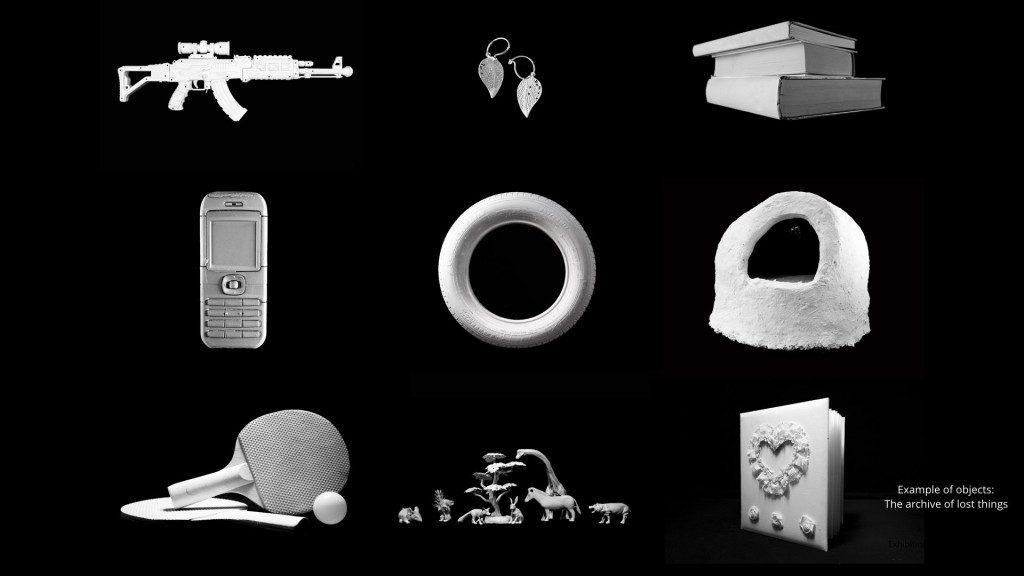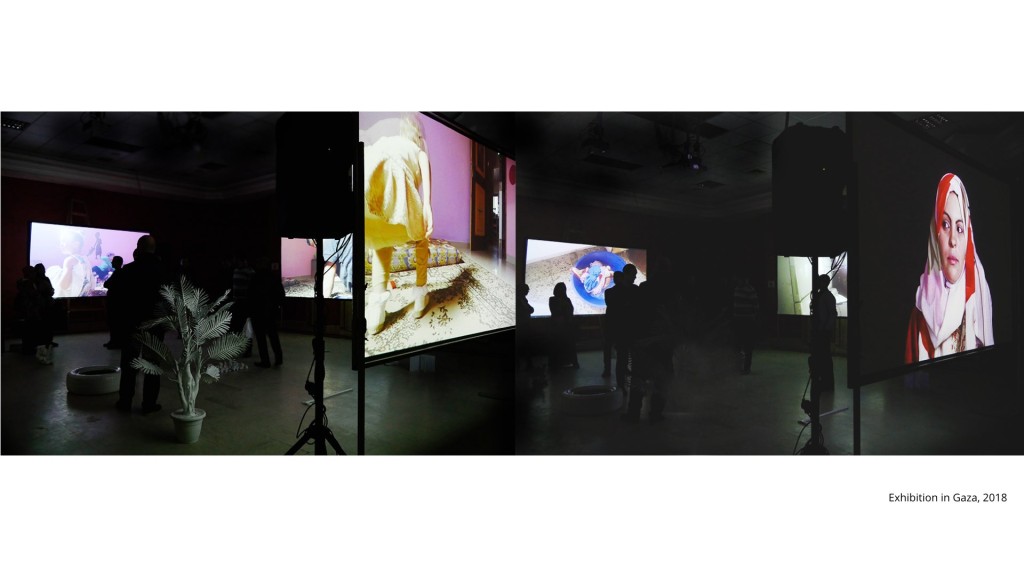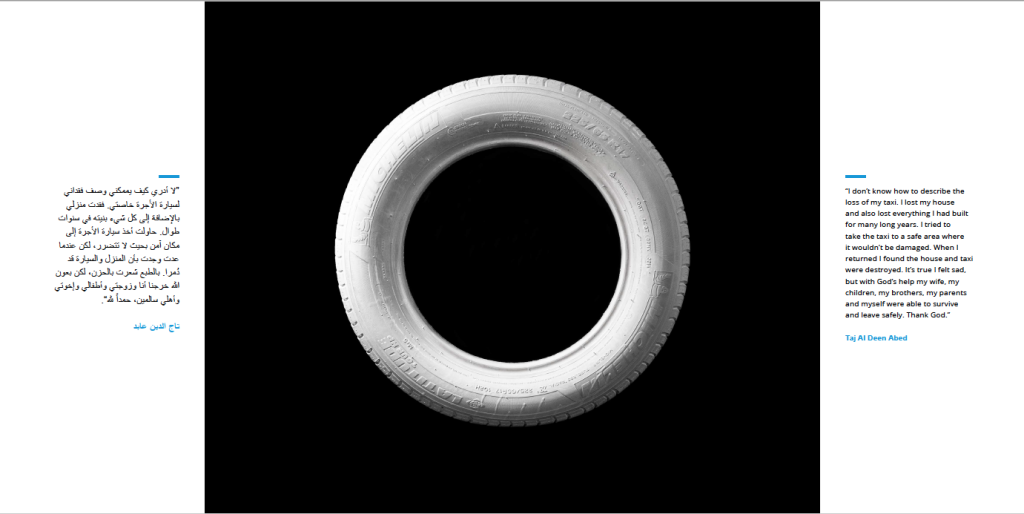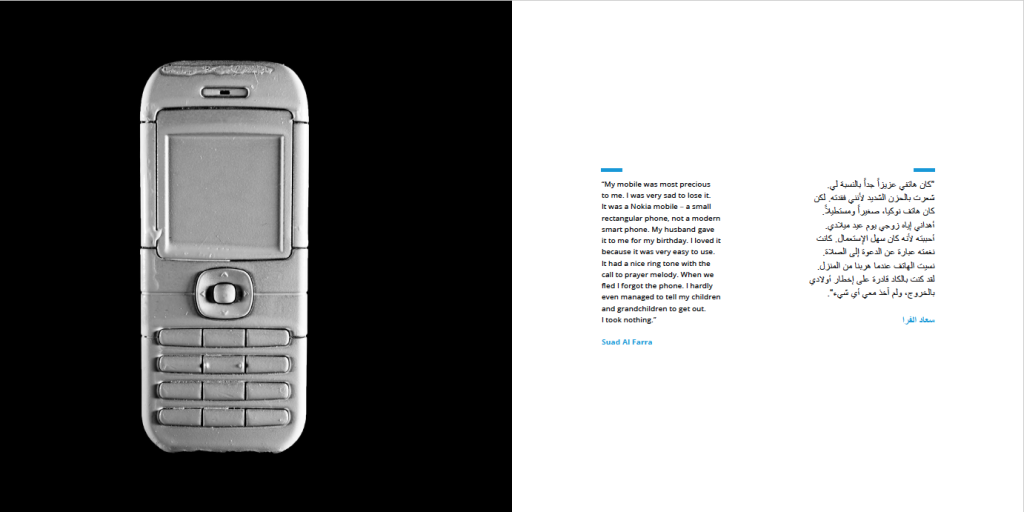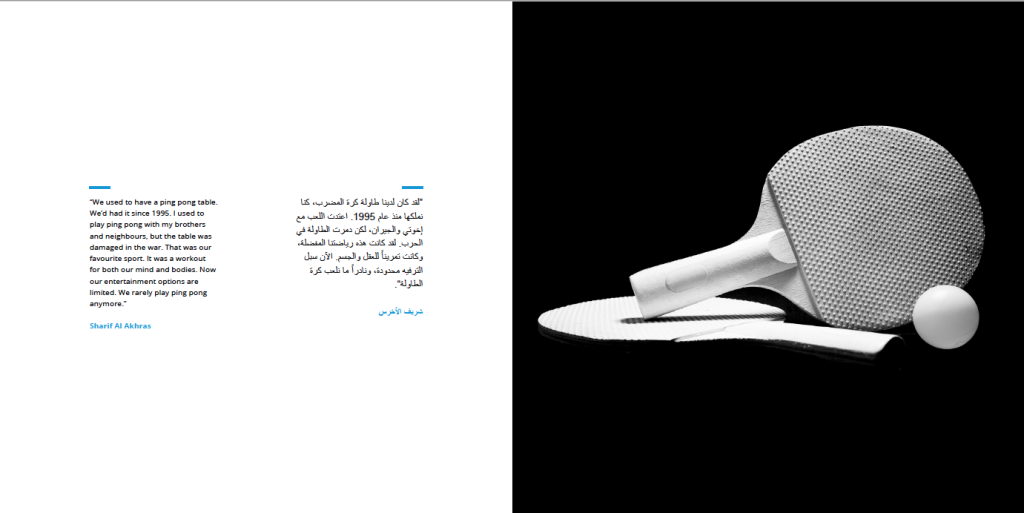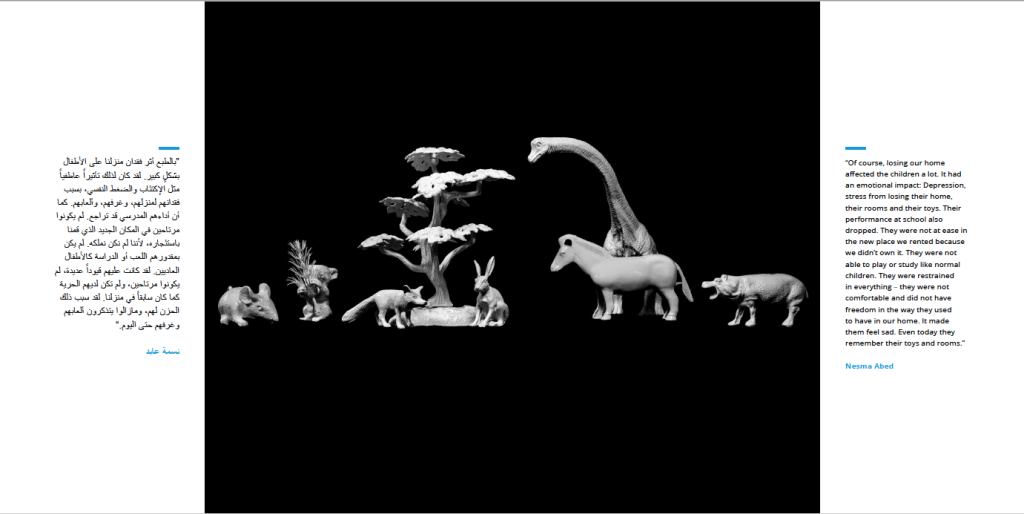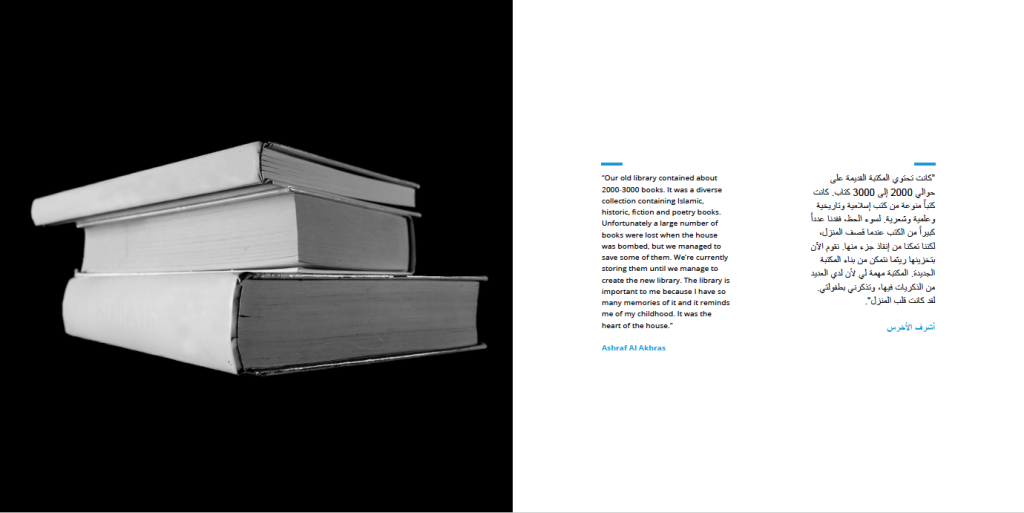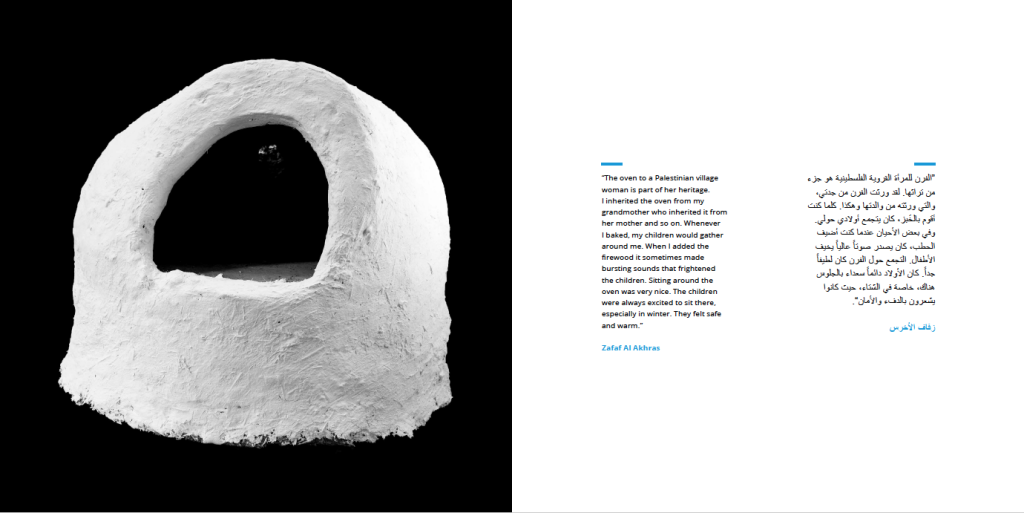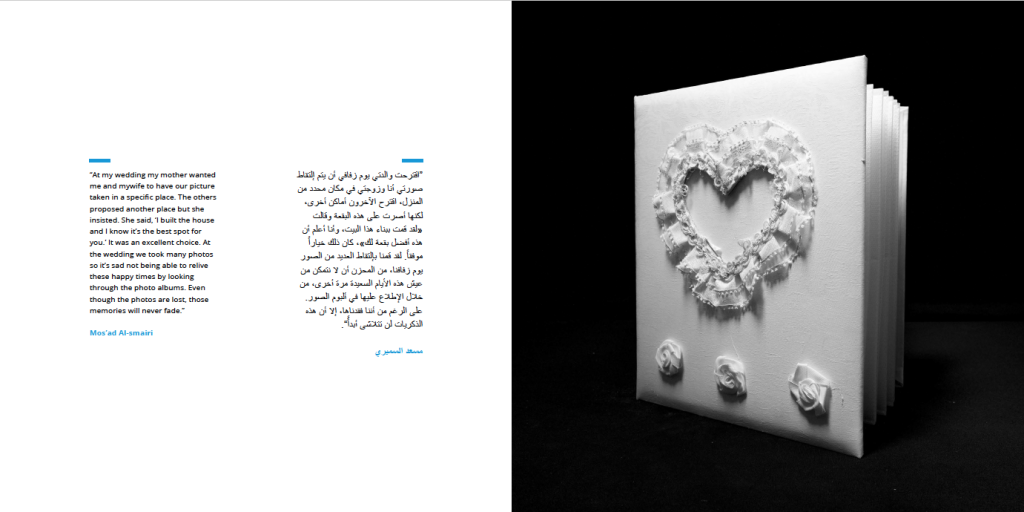“When a house is destroyed, it happens in the blink of an eye. Everything you owned, everything you worked for your whole life – your important documents, your love letters, your books, the kitchen appliances, your photos, your most treasured things – are scattered into fragments, no longer recognisable. The meaning you once attached to these items is also fragmented and all that remains are the memories, which in time also become fragments.”
AbdulHameed Al-Farra
The One and the Many
The One and the Many is a collection of short films by five families living in the Gaza Strip. Their stories take place at a time when they are reconstructing their homes, which were destroyed in the 2008 and 2014 Israel-Gaza conflicts. Weaving together their different perspectives, the exhibition attempts to deal with both the physical and imagined realities of home.
Through the process of reconstruction, the families explores the meaning of losing their homes. As their new homes are built, they share memories of their old homes and their lost possessions, and reflect on the meaning that they associate with the notion of home. Their stories help to provide insight into the impact of displacement, and how through the process of reconstruction, the borders between personal experience and memory change.
Each of the families participating in the exhibition received funding to rebuild their houses under a house reconstruction project financed by the Federal Republic of Germany through its Development Bank KFW. The project aims to contribute to the successful and sustainable reconstruction of totally destroyed housing in Gaza, thereby providing relief to the ongoing humanitarian crisis. It is implemented by UNOPS in close collaboration with the Palestinian Ministry of Public Works and Housing.
The exhibition is created with together with filmmaker Elise Laker and developed through the support of UNOPS.
The project
The everyday is an idea that seems self-evident. Yet in Gaza it is in the everyday that the emergency is exposed. It is classified by the lack of essentials, by the unpredictability of mundane activities and in the destruction of places of meaning. Although atrocious, the situation has become the norm to the point that it evades global headlines.
During the whole project period each family made recordings, in order to describe the significance of everyday life in Gaza.
Weaving together the families own recordings of the reconstruction process with recurrent interviews and reenacted situations the exhibition attempts to deal with both the physical and historical structure of places, as well as shared memories and imagined realities. The participants awareness of the homes being build, their effort in dealing with everyday life, the memories of homes that were lost and the stories that are being shared between people is the human reality behind the physical reconstruction.
The exhibition
50 min 4 channel video and sound.
9 objects.
The exhibition is an audio-visual composition that place the audience in the centre of an immersive experience. Through different storytelling techniques the audience are offered strong perspectives to understand the lifes of the participants: the first person singular voice through the recordings of the participants, interview material that underline and supports the recorded material and enacted situations that bring the audience into the physical spaces of the participants through multi-channel video recordings.
The five stories are:
I. THE FOUNDATION is Mos’ad Al Samiri’s homage to his mother, who raised him and his siblings on her own.
He explores home as the basis for love, stability, selfdevelopment and growth.
II. THE CHILDREN is Nesma Abed’s story about home as a place of safety and security.
She explores the sacrifices she has made as mother to protect her children and share her concerns about living so close to the Israeli-Gaza border.
IV. THE POWER is AbdulHameed Al Farra and his family’s story of home as a place of coming together.
It documents the family’s strength and coping strategies to deal with the daily power puts and other challenges caused by living under the blockade and the strain this puts on the household.
V. THE MEMORY is Ashraf Al Akhras and his family’s story about coming to terms with losing their home and family library.
They explore home as being a place from which to create memories and meaning.
III. THE SPACE is a story by Abla Ma’rouf who lived in 5 m2 room with her daughter and husband for 9 years.
She examines the idea of home being a place of freedom for women.
The families identified lost objects of special significance in order to materialize the void that homeless memories leave behind – memories attached to places or things no longer there. Somewhere between the realm of forgetting and existing the objects ties the exhibition space together with the participants personal history. The objects are present in the space, in the exhibition catalogue and in stories being told in the videos.
Feedback
The presentation brought together all the families who participated in the project to come and experience their work.
“It’s great to finally see the films. I feel like I’m part of something bigger. It’s really inspiring for my children to see this,” said Nesma Abed, the woman behind the story ‘The Children.’ Nesma’s story documents the effects of the conflict on her children and the impact that the reconstruction of her home will have on their future.
“It was great to watch the movies in the exhibition. It’s my first time seeing something like this. The work was so great. When you watch it, you feel like you’re inside the video,” said Barakat Al Farra, the young man behind ‘The Power.’ Barakat’s story explores his family’s resilience and strength as they come together to organize themselves and support the reconstruction process.
“I thank you for telling our story. What you see here are the true stories of our people’s ongoing suffering. This is usually never told by the media. I feel proud to have participated in this project,” said Zafaf Al Akhras, the mother in the story “The Memory”. Her family explores how the loss of their home and their library was also the loss of memory and identity.
The Project was exhibited in Gaza City and Jerusalem in February 2018 and in the UN City in Copenhagen in June 2018.
The exhibition catalogue for downloads: Exhibition catalogue_english-arabic
Learn more about UNOPS’s work in Gaza: https://www.unops.org/news-and-stories/stories/the-one-and-the-many

